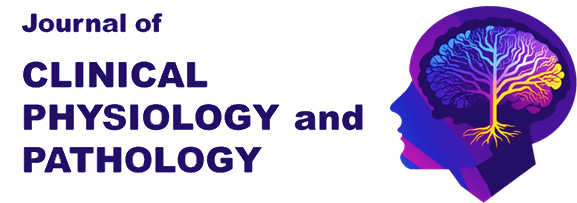COPYRIGHT AND ACCESS
COPYRIGHT
ACCESS
A collective article should be signed by all authors indicating the role of each.
Example:
Research concept and design – I. Ivanov, S. Sidorov
Collection and processing of material – P. Petrov
Statistical data processing – P. Petrov
Writing a text– S. Sidorov
Editing – I. Ivanov
Putting his signature under the article, the author thereby transfers the right to publish it to the editorial office, guarantees its originality and certifies that neither the article itself, nor the drawings to it were previously published and sent for publication to other publications.
In determining authorship, it is recommended that the ICJME criteria be followed.
Correction to the authors is not sent.
The author must have accurate and complete information on the research described in the article, which can be submitted on request.
The author does not have the right to submit one article for publication in several scientific publications. If the article uses information that was previously published, the author must indicate the source and author of the quoted information. In addition, the author must provide the editor with a copy of the cited article.
The author must confirm that his article is original, and indicate the sources of cited information.
The author is responsible for complying with national and local laws when conducting studies involving people and animals (e.g. Helsinki Declaration of the World Medical Academy; NCD policy on animal research; EU animal research directive). The author must obtain permission to publish from the person (s) who participated in the study and respect confidentiality.
1.Gratitudes. The authors can express gratitude to the persons and organizations that contributed to the preparation of the article.
2..Information about the sources of financing. It is necessary to indicate the source of funding for the study, preparation of the review or lecture (the name of the planned research carried out on the state task, the grant number and the name of the fund, commercial or state organization, etc.). No amount of funding required
3.Conflict of Interest Information. It is necessary to declare the presence or absence of a potential conflict of interest (for example, competing interests, which, in the author’s opinion, may have a direct or indirect influence on the publication process)
4.When identifying a significant error in the publication, the author must immediately inform the editor. Throughout the publication process, the author is obliged to cooperate with the editor and publisher, adding, deleting and correcting the article, if necessary. If a significant error, inaccuracy of data, etc. is revealed, after publication, the editors reserve the right to withdraw the published article.
5.The author fully assumes responsibility for possible plagiarism of text, figures, etc. The author submits to the editorial office in a separate file (pdf format) the result of checking the article for originality (uniqueness) of the text of the article. The editorial board of the journal, when considering an article, can check the material using systems for checking the text of articles for anti-plagiarism. In the event that multiple borrowings are discovered, the editors act in accordance with COPE rules.
6.When reviewing copyright material received, the Editorial Board is guided by the «Uniform requirements for manuscripts submitted to biomedical journals» (Intern. committee of medical journal editors. Uniform requirements for manuscripts submitted to biomedical journals // Ann. Intern. Med. 1997; 126: 36–47) EASE and Singapore Statement on Research Integrity.
7.Authors must provide a link to their digital profile in ORCID.
8.When sending an article to the editorial office, the authors must be informed whether one of the authors is a dissertation, be sure to indicate the title of the dissertation within which this work was performed.
9.Articles submitted in violation of the rules of design are not considered.
10.Articles submitted in violation of the rules of registration are not considered. Articles should be sent through the article submission system https://journal.iscpp.eu/submit-a-publication/
RULES OF REGISTRATION OF REFERENCE LISTS
The rules for compiling cited references (bibliography) for authors are compiled taking into account the “Uniform Requirements for Manuscripts Submitted to Biomedical Journals” manuscripts submitted to biomedical journals. The correct description of the sources used in the references is the guarantee that the cited publication will be taken into account when evaluating the scientific activities of its authors and the organizations where they work.
=In the list of references, all works are listed in citation order (references to them in the text, not alphabetically). At least 25 sources may be cited in original articles, at least 50 in literature reviews, up to 25 in lectures and other materials. The bibliographic description of domestic journals is complete, foreign ones must comply with PubMed or MEDLINE style.
The procedure for compiling the list: 1) the author (s) of the book or article (with the authors’ team up to 6 people, all are mentioned, with large groups of authors – 3 first authors “et al.”, In foreign ones “et al.”); 2) if editors act as authors of books, after the surname should be put “ed.”; 3) the title of the book and article; 4) output.
If the cited article has a DOI index, you must specify it in the list of references.
Examples of references to the literature
Journal article
Martin A., Jackel M.C., Christiansen H. et al. Organ preserving transoral laser microsurgery for cancer of the hypopharynx. Laryngoscope. 2008; 118: 298–406.
Huang W.Y., Jen Y.M., Chen C.M. Intensity modulated radiotherapy with concurrent chemotherapy for larynx preservation of advanced resectable hypopharyngeak cancer. Radiat. Oncol. 2010;5:37
Bоoks
Keshav S., Culver E. Gastroenterology: Clinical cases uncovered. New York: Wiley—Blackwell; 2011. 192p.
Materials of scientific conferences
European meeting on hypertension. Milan, Jine 15–19, 2007. Milan; 2007.
Electronic source
World Health Organization. Health for All Database. http://www.euro.who.int/ru/what-we-do/data-and-evidence/databases/european-health- for-all-database-hfa-db2
Sample transliteration and translation of the article for Russian-language links:
Egorov M.A., Nefedov V.P., Nefedov O.V. Clinical morphology of precancer and cancer of the lip. Klinicheskaja stomatologija. 2011;4(60):26–28
